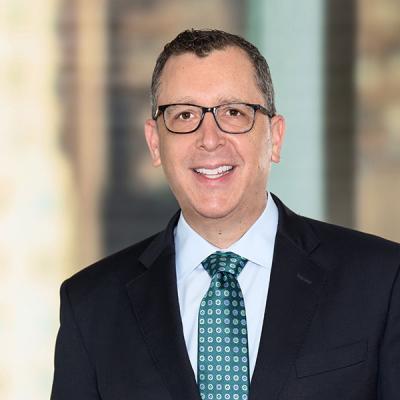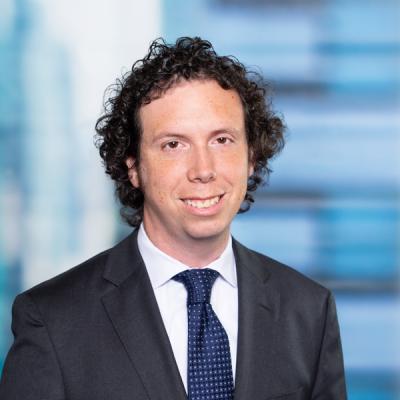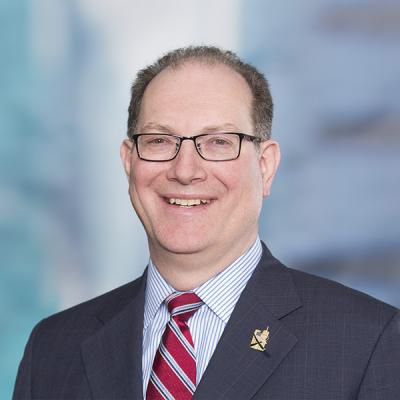Price Gouging Laws — What Clients Need to Know
About our authors: Jason P.W. Halperin, Scott A. Rader, and Anthony J. Viola are members in Mintz’s Litigation Section, and Jeffrey A. Moerdler is a member in Mintz’s Real Estate Section. David H. Drew is a law clerk in the Litigation Section.
Introduction:
Imagine the following:
You are a distributor of consumer products — everything from diapers to cat food to cleaning products. Business is good. But one day, your workers start calling in sick. You suddenly have to hire temporary replacements through an agency, costing 50% more hourly. Your mayor issues an emergency declaration. Your sales skyrocket, as the stores you serve face crushing demand from an anxious public. But with fewer workers and more work, you have to pay overtime and provide them with masks and gloves. And with disruptions up and down the supply chain, your costs have also gone way up from what they were in the fourth quarter of 2019. And there’s no end in sight to the crisis.
You want to remain in business, and your products are now more important than ever to your customers, but at the same time, you are a good corporate citizen, so you don’t want to violate any price gouging laws. So if your costs have gone way up in the past few months, how do you figure out how to price appropriately?
Thanks to the COVID-19 pandemic, it may not take much to imagine the above. Many of our clients now face the dilemma of navigating price gouging laws and regulations during these uncertain times.
Unfortunately, there is very little clear guidance about what constitutes price gouging. These kinds of consumer protection statutes, like New York’s General Business Law Section 396-r, are rarely invoked and rife with ambiguities. Worse, New York’s law simply doesn’t fit with today’s climate. The law has been applied previously only during singular “market disruptions” — primarily harsh winter and summer storms — but now stands to be applied during an ongoing and open-ended crisis that is becoming more like a “new normal” and that could last for far longer than weather-related disasters and their aftermath.
As other jurisdictions — including New York City, Massachusetts and the federal government — follow New York’s lead in cracking down on price gouging, and as New York has expanded its enforcement, any business involved in the chain of distribution of COVID-19–related goods needs to tread lightly and understand the risks. This alert explores some of the many uncertainties surrounding these laws, beginning with an examination of New York’s primary anti-gouging statute.
Background:
New York passed Section 396-r of its General Business Law (“GBL”) in 1979, making it the first anti-gouging statute of its kind in the nation. The law was enacted after heating oil shortages in the winter of 1978–1979, and was passed and signed after only scant deliberation. According to the legislature, the goal of enacting GBL Section 396-r was to prevent “any party within the chain of distribution of any consumer goods from taking unfair advantage of consumers during abnormal disruptions of the market,” so that consumers can retain access to goods “vital and necessary for the[ir] health, safety, and welfare…” The law achieves this by prohibiting the sale of such goods at “unconscionably excessive” prices. That term, however, is undefined.
The law has a number of limiting features, which govern its scope.
First, the law is triggered only by and applies only during “abnormal disruption[s] of the market,” meaning “any change…resulting from stress of weather, convulsion of nature, failure or shortage of electric power or other source of energy, strike, civil disorder, war, military action, national or local emergency, or other cause…which results in the declaration of a state of emergency by the governor.” While historically this has usually meant weather-related events, the current period undoubtedly counts as an “abnormal disruption”: the New York Attorney General has said it began the “disruption” clock with the federal declaration of a national public health emergency on January 31, 2020.
Second, the law applies only to businesses or individuals involved in the chain of distribution of “consumer goods or services” — those that are “used, bought or rendered primarily for personal, family or household purposes.” Further, the law covers only “vital and necessary” goods — non-necessary goods are unaffected.
Third, and last, the law clearly applies only to businesses within the “chain of distribution” leading to sales of goods or services to consumers in New York State. This means, at least, manufacturers, wholesalers, distributors or retail sellers of goods to be sold in New York.
No clear safe harbors for normal commercial practices:
Despite these apparent limits, the law is also replete with uncertainties. Indeed, every apparent limit on the scope of the law is also ambiguous enough to give businesses cause for concern.
First — what goods exactly are “vital and necessary for the health, safety and welfare of consumers”? The definition, as applied by the courts, is certainly broader than those strictly necessary for health and safety. In People ex rel. Abrams v. Two Wheel Corp., 71 N.Y.2d 693 (1988), the Court of Appeals held that backup electric generators are considered “necessary” under the law because everyone generally needs power — despite the fact that many consumers do not own a generator, and never will. And yet the statute certainly draws a distinction between “consumer goods” and those that are “vital and necessary,” suggesting that things consumers can go without are not covered.
This boundary is particularly unclear during the current pandemic, in which guidance on how to stay safe has rapidly changed and is likely to change further. The attorney general’s current guidance also does not help in this area: for instance, hand sanitizer is currently considered “necessary” (and thus sales of hand sanitizer are subject to potential enforcement), despite the fact that the CDC recommends hand sanitizer as merely a backup when soap and water are not readily available. In comparison, the attorney general notes that face masks are currently not considered necessary — even though the CDC is now recommending the use of cloth masks to help prevent community spread and face masks are covered by a separate New York City emergency rule. Those involved in the sale or distribution of COVID-19–related goods are left to their own devices to attempt to determine which of their sales are within which zone of these patchwork — and sometimes inconsistent — pronouncements. (Nonetheless, we expect continued federal enforcement efforts as to all items of personal protective equipment.)
Second — what constitutes an “unconscionably excessive price” under the law? Although the statute uses alarming words (e.g., “unconscionably extreme,” and “gross disparity”), the Court of Appeals has held that practically any increase in price solely attributable to a market disruption may be “unconscionable.” People ex rel. Abrams v. Two Wheel Corp., 71 N.Y.2d at 695. The Court in Two Wheel Corp. was willing to consider a mere 4% increase in price “unconscionably excessive” because it was “tainted by [one party’s] use of the superior bargaining position attributable to” an abnormal disruption. Id. at 696.
But the line between “prices achieved by abuse of superior bargaining position” and “prices reflecting current market realities” is almost impossible to discern. Yes, consumers have a greater need for home-use toilet paper right now — but if prices were to go up, how much of that price increase can rightly be attributed to unconscionable excess, instead of increased costs of manufacturing labor, transportation, retail labor and other costs on the business side?
The law attempts to provide a safety valve here: a person or business charged with price gouging can put forward evidence that their increased price was the result of increased costs “not within the defendant’s control.” Indeed, materials reviewed by Mintz indicate that the New York Attorney General is currently soliciting “cost justification” evidence through cease-and-desist letters it is sending to alleged price gougers. Yet courts in New York have often taken a narrow view of what counts as costs “not within [a party’s] control.” In People v. Wever Petroleum, Inc., 14 Misc. 3d 491, 495 (Sup. Ct. Albany Cty. 2006), a gas station that expanded its markup from 83 cents to 97 cents per gallon due to market disruption from Hurricane Katrina was found liable where its increased margin “far exceeded [that] needed. . . to maintain a similar pre-hurricane profit or to generate the required revenue to purchase [more] gasoline. . .” — despite the fact that the gas station’s freight costs had increased four-fold, and uncertain market conditions and ongoing supply shortages meant that the price of gasoline in the future was likely to go substantially higher.
Third — how long until an “abnormal” market disruption becomes normal? While New York is now flattening the curve, public health experts agree that a return to COVID-free normalcy could easily take a year or more. New York’s price gouging law expressly applies only during “abnormal” disruptions, but it seems entirely possible that we are heading toward a potentially protracted “state of emergency” and a year of permanently increased demand for certain consumer staples — demand that is entirely the result of the crisis. Would any decision to increase prices on consumer staples — say, to compensate for decreased sales in other areas — be considered “unconscionably excessive” as a result? Under the text of the statute and governing case law, it’s certainly possible. Merchants and suppliers should not assume that good news in the crisis, such as the elimination or reduction of shelter-in-place restrictions, means that the New York price gouging law is no longer applicable.
The price gouging landscape is constantly evolving:
New York’s GBL Section 396-r may be one of the most well-established anti-gouging laws in America, but it’s far from the only one. Those involved in the sale or supply of COVID-19–related goods must navigate a complex and constantly changing regulatory landscape. Merchants in New York City now face an emergency rule adopted by the Department of Consumer and Worker Protection on March 15. This emergency rule restricts price increases of 10% or more over what consumers previously would have paid for “any good or service that (i) is reasonably believed by a consumer to aid in diagnosing or monitoring disease symptoms, preventing the spread of disease, or treating disease; or (ii) is marketed by a merchant as aiding in diagnosing or monitoring [the same].” The rule contains an exception, indicating that it does not apply if the seller can show that its price increase is the result of comparable increases in labor and materials costs. Guidance concerning the rule goes on to give examples including cleaning products, diagnostic products and services, face masks, gloves, medicine, and hand sanitizer. Nevertheless, the actual extent of that rule is much broader than the examples given, introducing yet more ambiguity. As the quickly evolving situation shows, what constitutes an item “reasonably believed…to aid in diagnosing…monitoring…preventing the spread of…or treating” COVID-19 is fluid. Many news outlets have reported on the extensive fines being levied under this rule.
The federal government has also gotten involved. On March 23, President Trump signed an executive order delegating his enforcement authority under the Defense Production Act to the Secretary of Health and Human Services. Two days later, HHS issued guidance designating many forms of medical equipment as “scarce…or threatened materials” under Section 102 of the Defense Production Act. As a result, any person or entity is prohibited from accumulating these materials (1) in excess of the reasonable demands of business, personal, or home consumption, or (2) for the purpose of resale at prices in excess of prevailing market prices.
And now federal prosecutors are bringing charges based on price gouging allegations. On Friday, April 24, the U.S. Attorney’s Office for the Eastern District of New York announced its first prosecution for price gouging, charging a Long Island businessman with violating the federal regulations promulgated under the Defense Production Act described above. The defendant allegedly sold materials at markups ranging from 59% for N95 respirators to 1,328% for surgical masks. CNN has also reported that the federal government has begun seizing respirators and surgical masks bound for resale as soon as they arrive in the United States, again using the Defense Production Act to force certain necessary goods out of private commerce.
Other states throughout the Northeast Corridor have either stepped up or initiated their own gouging enforcement. The Massachusetts Attorney General, for example, promulgated an emergency anti-gouging rule on March 22, copying much of the structure of New York’s rule but noting clearly that it extends to both sales to consumers and sales to businesses. While this removes one ambiguity from New York’s law, it introduces others — will courts in Massachusetts rely on New York law to interpret this new authority?
Each of these regulators (and others not discussed) adds to the complexity and concern for those selling goods responsive to the coronavirus. Each business will need to carefully review the particular landscape it operates in to determine if its business practices are appropriate, and will need to consider its tolerance for risk since the rules of the road are not clear.
Conclusion:
As we all keep adjusting to the new normal, businesses involved in the sale of COVID-19–responsive materials should proceed with caution. Price gouging laws have been rarely invoked – but that is clearly changing, and fast. The complicating factor for our clients is that the central question — what conduct constitutes price gouging — is not clearly defined, and the law is all over the map. In sum, for businesses weighing pricing decisions during this “abnormal market disruption,” it is best to proceed cautiously and to be able to articulate how the business’s costs have gone way up as a result of the pandemic.




